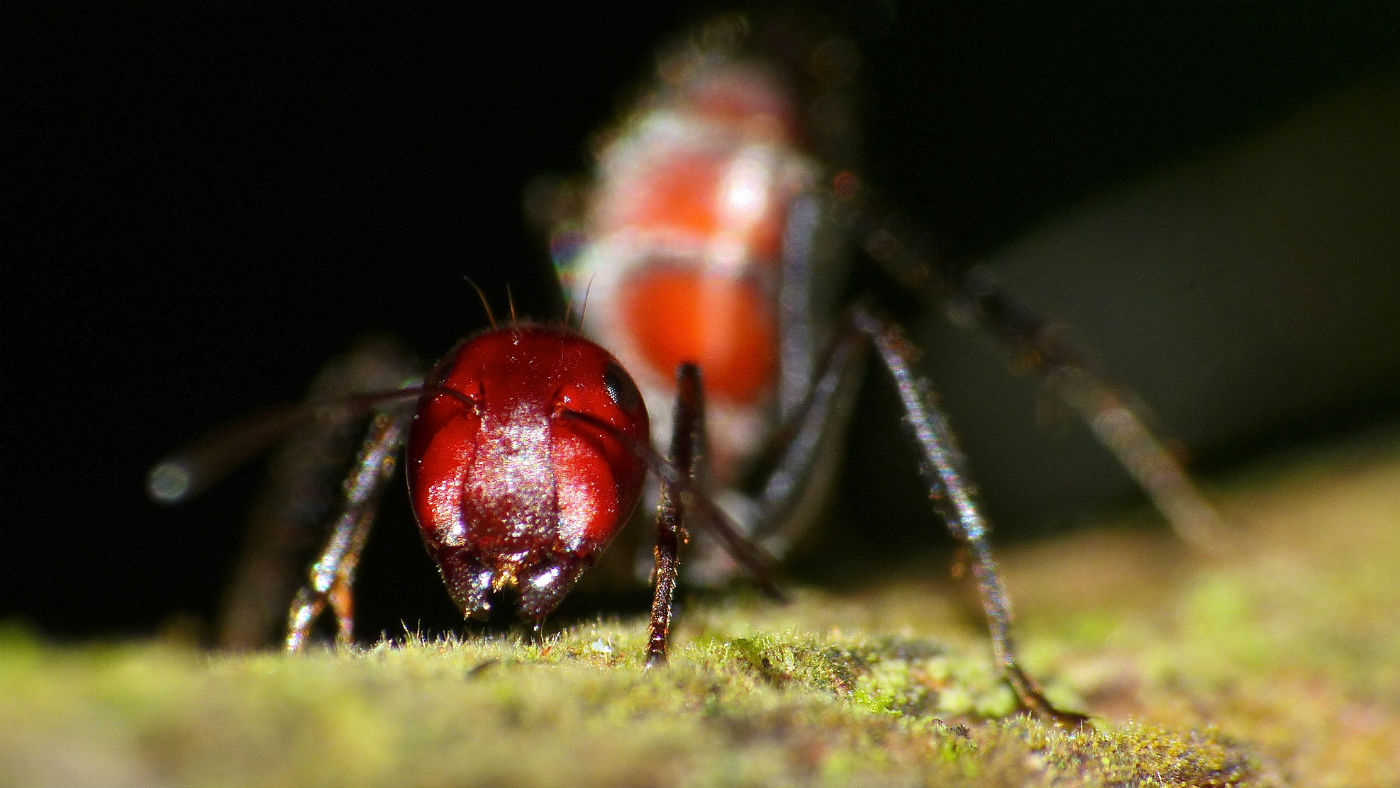‘Exploding ant’ species discovered in Borneo
Insect ‘suicide bomber’ tears itself apart to coat attackers in toxic substance

Scientists have discovered a new species of “exploding ant” which sacrifices itself when attacked to protect the rest of the colony.
Exploding ants were first observed in 1916, but little is known about the rare insects, says New Atlas, so “a research team made up of entomologists, botanists, microbiologists, and chemists from Austria, Thailand and Borneo ventured into the forests of southeast Asia to find some fresh evidence”.
In the forests of Borneo, they discovered a previously unknown species of exploding ant - the first new variety of the insect recorded since 1935.
The Week
Escape your echo chamber. Get the facts behind the news, plus analysis from multiple perspectives.

Sign up for The Week's Free Newsletters
From our morning news briefing to a weekly Good News Newsletter, get the best of The Week delivered directly to your inbox.
From our morning news briefing to a weekly Good News Newsletter, get the best of The Week delivered directly to your inbox.
When attacked, the tree-dwelling ant - which has been christened ‘Colobopsis explodens’ - latches on to its opponent and then flexes its abdomen so hard that it bursts, spraying the attacker with the toxic yellow liquid stored within its glands.
“Unsurprisingly, this results in immediate death,” says New Atlas. Like bumblebees, who die after using their sting, the ant sacrifices itself for the protection of the colony.
“The ability to blow up is not the species’ only interesting attribute,” says National Geographic.
For instance, the “lethal yellow goo has a distinct and not unpleasant smell that’s strangely reminiscent of curry”.
A free daily email with the biggest news stories of the day – and the best features from TheWeek.com
Not all colobopsis explodens are mere cannon fodder, however. While “minor workers” resort to kamikaze attacks, “major workers (also called ‘doorkeepers’) have big, plug-shaped heads used to physically barricade the nest entrances against intruders”, says Science Daily.
-
 Heavenly spectacle in the wilds of Canada
Heavenly spectacle in the wilds of CanadaThe Week Recommends ‘Mind-bending’ outpost for spotting animals – and the northern lights
-
 Facial recognition: a revolution in policing
Facial recognition: a revolution in policingTalking Point All 43 police forces in England and Wales are set to be granted access, with those against calling for increasing safeguards on the technology
-
 Codeword: December 14, 2025
Codeword: December 14, 2025The daily codeword puzzle from The Week
-
 Femicide: Italy’s newest crime
Femicide: Italy’s newest crimeThe Explainer Landmark law to criminalise murder of a woman as an ‘act of hatred’ or ‘subjugation’ but critics say Italy is still deeply patriarchal
-
 Brazil’s Bolsonaro behind bars after appeals run out
Brazil’s Bolsonaro behind bars after appeals run outSpeed Read He will serve 27 years in prison
-
 Americans traveling abroad face renewed criticism in the Trump era
Americans traveling abroad face renewed criticism in the Trump eraThe Explainer Some of Trump’s behavior has Americans being questioned
-
 Nigeria confused by Trump invasion threat
Nigeria confused by Trump invasion threatSpeed Read Trump has claimed the country is persecuting Christians
-
 Sanae Takaichi: Japan’s Iron Lady set to be the country’s first woman prime minister
Sanae Takaichi: Japan’s Iron Lady set to be the country’s first woman prime ministerIn the Spotlight Takaichi is a member of Japan’s conservative, nationalist Liberal Democratic Party
-
 Russia is ‘helping China’ prepare for an invasion of Taiwan
Russia is ‘helping China’ prepare for an invasion of TaiwanIn the Spotlight Russia is reportedly allowing China access to military training
-
 Interpol arrests hundreds in Africa-wide sextortion crackdown
Interpol arrests hundreds in Africa-wide sextortion crackdownIN THE SPOTLIGHT A series of stings disrupts major cybercrime operations as law enforcement estimates millions in losses from schemes designed to prey on lonely users
-
 China is silently expanding its influence in American cities
China is silently expanding its influence in American citiesUnder the Radar New York City and San Francisco, among others, have reportedly been targeted